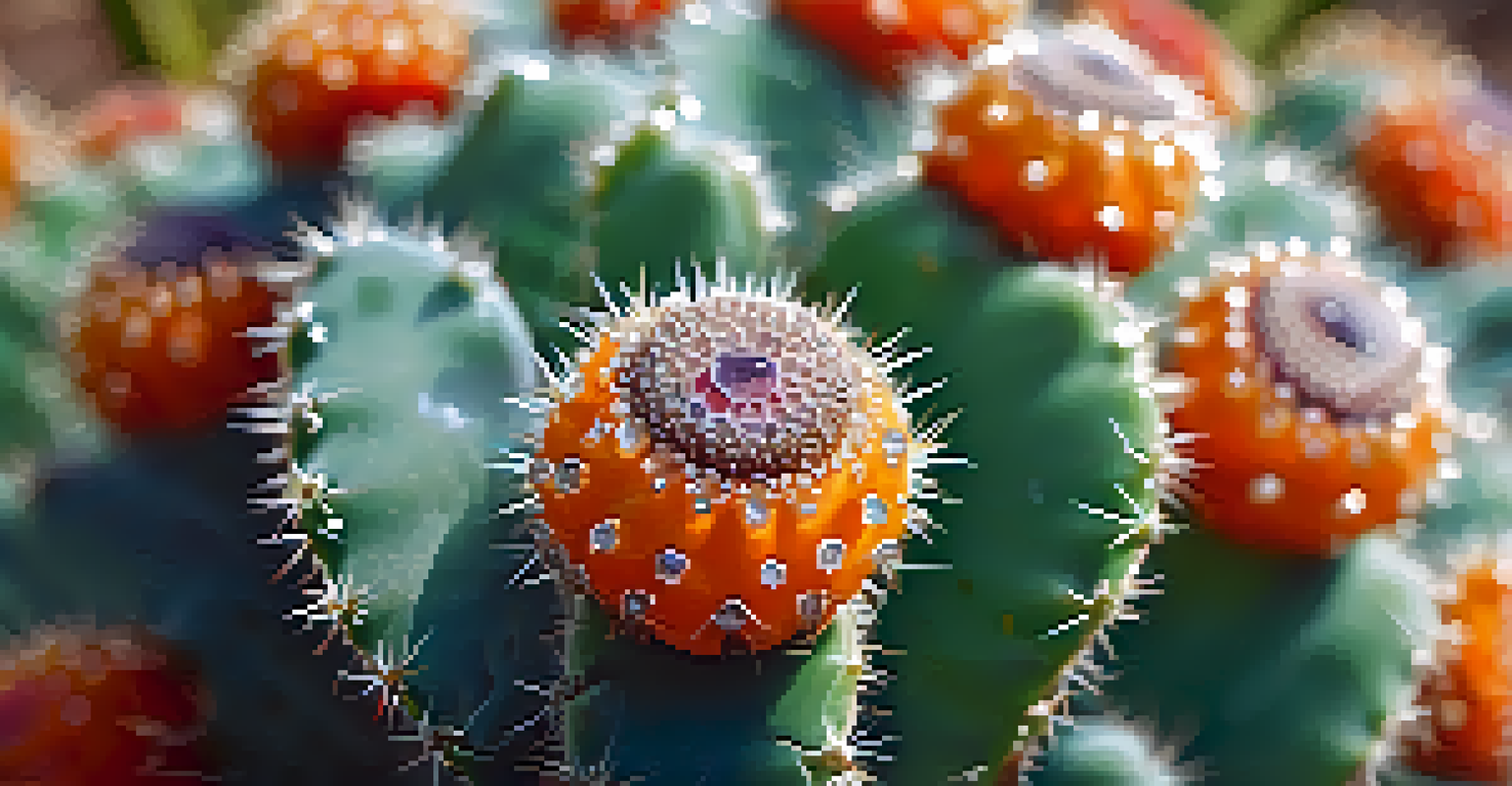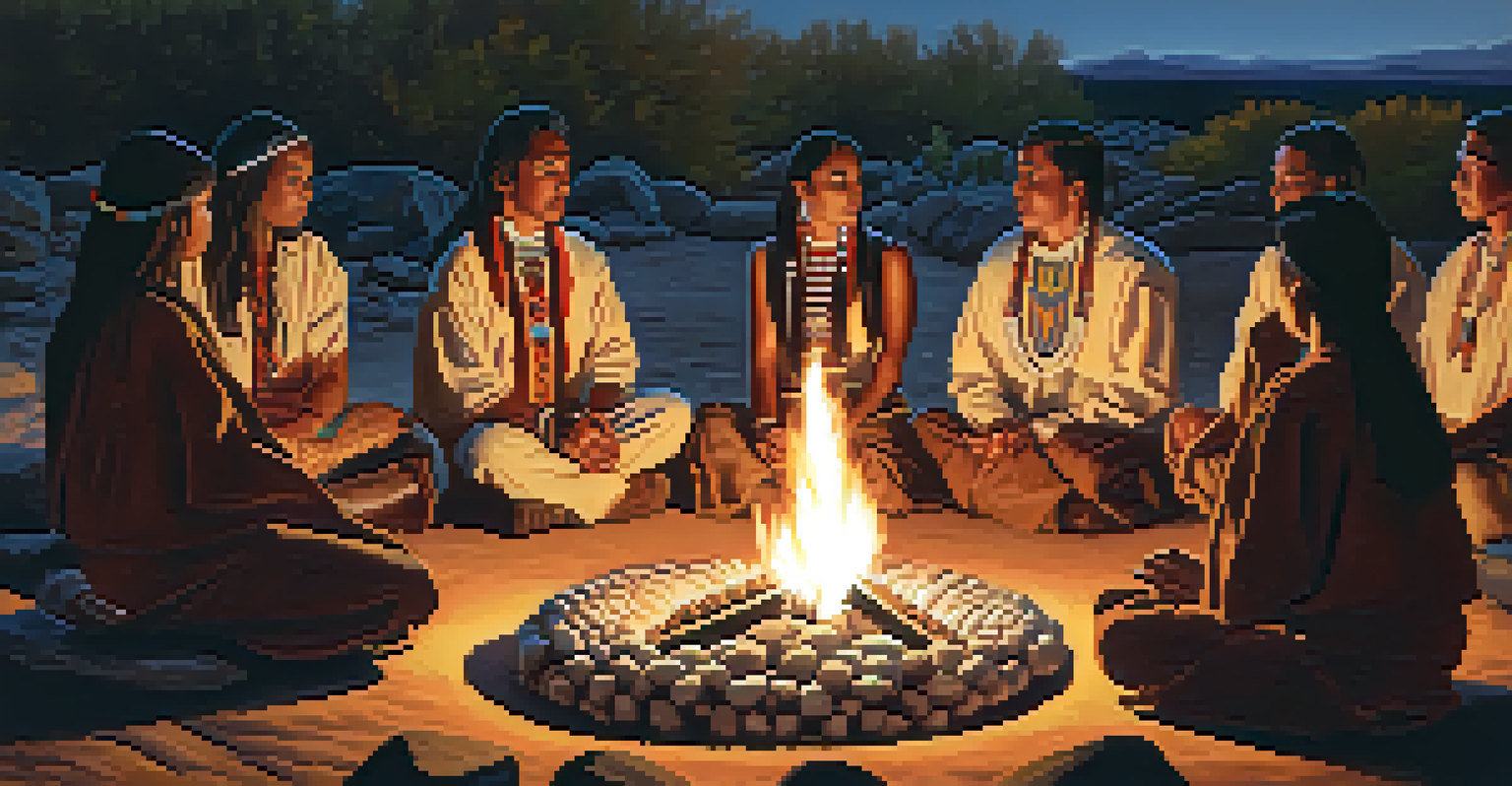The Spiritual Significance of Peyote in Native American Rituals

Understanding Peyote: A Sacred Cactus
Peyote, a small cactus native to Mexico and the southwestern United States, holds a revered place in Native American spirituality. This plant contains mescaline, a psychoactive compound that induces altered states of consciousness. For many Indigenous tribes, Peyote is not just a plant; it symbolizes a bridge to the spiritual realm, connecting participants with their ancestors and the divine.
Peyote is a sacred gift that connects us to the spirit world and to each other.
The use of Peyote dates back thousands of years, deeply intertwined with the cultural practices of various Native American tribes. Its significance extends beyond mere consumption; it is a spiritual tool used in ceremonies and rituals that promote healing and vision. Understanding the importance of Peyote requires an appreciation of its historical and cultural context.
In these rituals, Peyote serves as a guide, helping individuals navigate their inner landscapes. Participants often report profound experiences that lead to personal insights and communal bonding, reinforcing their connection to both the spiritual and natural worlds.
Historical Context of Peyote Use
The historical significance of Peyote is rooted in the traditions of Indigenous peoples across North America. It has been used for centuries by tribes such as the Huichol, Lakota, and Navajo as part of their spiritual practices. These early uses established a rich tapestry of beliefs surrounding the cactus, often centered on healing, guidance, and unity with nature.

Documentation of Peyote's use can be traced back to the early 19th century, when it began to gain wider recognition among non-Indigenous people. As these practices were observed, a greater understanding of the plant's role in spiritual ceremonies emerged. This led to the formation of various Peyote-based religious organizations, such as the Native American Church.
Peyote's Spiritual Significance
Peyote serves as a sacred tool for Indigenous tribes, facilitating spiritual connections and communal bonding through its use in rituals.
Despite the challenges posed by external societal pressures and legal restrictions, the use of Peyote has persisted. Many communities continue to uphold traditional practices, blending ancient customs with contemporary beliefs to maintain their cultural identity.
Peyote in Rituals: A Communal Experience
Rituals involving Peyote often emphasize community and connection, bringing participants together in a shared journey. These ceremonies can last for hours, sometimes even days, and typically include singing, drumming, and prayer. This communal aspect fosters a sense of belonging and support, essential for those seeking spiritual growth.
The importance of Peyote lies not only in its use but in the community it creates and the healing it brings.
During these gatherings, the Peyote experience is enhanced by the presence of a spiritual leader or shaman, who guides participants through their journey. The shaman plays a crucial role, ensuring that the ceremony remains focused and that participants feel safe as they explore their inner worlds. Their expertise helps navigate the complexities of the Peyote experience.
As participants consume Peyote, they often enter altered states of consciousness, leading to powerful visions and deep personal reflections. This shared experience can create lasting bonds among individuals, reinforcing the importance of community in the pursuit of spiritual enlightenment.
Healing and Transformation through Peyote
One of the most profound aspects of Peyote rituals is their focus on healing, both physical and emotional. Many participants seek Peyote for its reputed ability to facilitate introspection and personal transformation. Through guided meditation and reflection, individuals can confront past traumas, fostering a path towards healing.
The therapeutic benefits of Peyote have been acknowledged in various studies, indicating its potential in treating conditions such as depression and anxiety. The plant's psychoactive properties can help individuals gain new perspectives on their lives, contributing to a sense of well-being and mental clarity. This aligns with the broader understanding of mental health in Indigenous cultures, which often emphasizes holistic approaches.
Challenges to Peyote Practices
Contemporary society presents legal and sustainability challenges to the traditional use of Peyote, threatening its availability and cultural significance.
Ultimately, the journey with Peyote is about more than just individual healing; it promotes collective wellness within communities. Participants often emerge with renewed purpose and a deeper understanding of their roles within their families and tribes, contributing to the overall health of their communities.
Challenges Facing Peyote Use Today
Despite its significance, the use of Peyote faces numerous challenges in contemporary society. Legal restrictions and cultural misunderstandings often threaten the traditional practices surrounding this sacred plant. Many Indigenous communities strive to protect their rights to use Peyote in spiritual ceremonies, advocating for recognition and respect.
Moreover, the increased demand for Peyote has raised concerns about sustainability and conservation. As interest in Peyote grows outside Indigenous communities, there is a risk of overharvesting, which could threaten its availability for future generations. This highlights the need for responsible practices and greater awareness of the plant's cultural significance.
Navigating these challenges requires a balance between preserving tradition and adapting to modern realities. Education and respectful dialogue between Indigenous and non-Indigenous peoples are crucial in fostering understanding and ensuring that Peyote continues to be honored as a sacred element of Native American spirituality.
Peyote in Contemporary Spiritual Practices
In recent years, there has been a resurgence of interest in Peyote among both Indigenous and non-Indigenous people seeking spiritual experiences. Many individuals are drawn to its historical significance and potential for personal growth. However, it’s essential to approach this interest with respect for its cultural roots and the communities that have used it for centuries.
Contemporary spiritual practices often incorporate elements of traditional Peyote ceremonies, while also adapting to modern contexts. Some individuals may participate in guided sessions led by Indigenous leaders, while others may seek to explore Peyote within their personal spiritual journeys. Regardless of the context, it is crucial to honor the traditions and teachings that surround its use.
Healing Through Peyote Rituals
Peyote rituals promote healing and personal transformation, offering therapeutic benefits that align with holistic mental health approaches in Indigenous cultures.
As this interest grows, ongoing dialogue about ethical practices and cultural sensitivity becomes increasingly important. By fostering respectful relationships and promoting cultural awareness, we can ensure that the spiritual significance of Peyote continues to be appreciated and revered.
The Future of Peyote in Native American Spirituality
Looking ahead, the future of Peyote in Native American spirituality remains intertwined with the fate of Indigenous communities. As these cultures continue to navigate the complexities of modern society, the preservation of Peyote rituals becomes crucial for maintaining their spiritual heritage. This involves not only protecting the plant but also ensuring that the knowledge and practices surrounding it are passed down to future generations.
The revival of interest in Indigenous spirituality among wider audiences can serve as a double-edged sword. While it promotes awareness and appreciation for these traditions, it also necessitates vigilance against appropriation and exploitation. Advocating for Indigenous rights and sovereignty is essential in safeguarding the sacredness of Peyote practices.

Ultimately, the enduring significance of Peyote lies in its ability to connect people with their spiritual selves and the world around them. By honoring its place in Native American rituals, we can contribute to a deeper understanding of Indigenous cultures and the wisdom they hold for all of humanity.